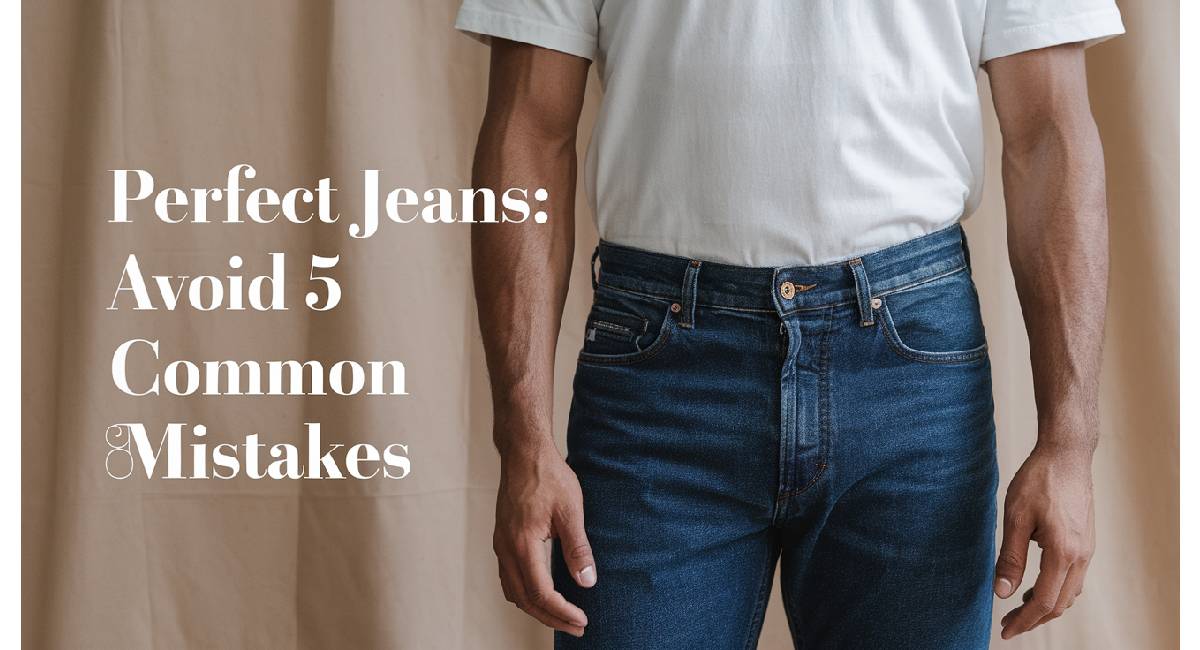The Secret to Perfect Jeans: Avoid These 5 Common Mistakes
When it comes to buying jeans, many men make common mistakes that affect both comfort and style. Whether it’s opting for the latest trend without considering fit, overlooking fabric quality, or settling for the wrong size, these errors can lead to frustration and wasted money. However, the right pair of jeans can enhance your appearance, provide lasting comfort, and become a versatile staple in your wardrobe. In this article, we’ll uncover the five most common mistakes men make when buying jeans and offer simple, effective tips to help you avoid them, ensuring you always look and feel your best.
Choosing Style Over Fit
- The Trend Trap: Many men fall into the trap of chasing the latest jean trends without considering how those styles fit their body type. For example, skinny jeans may be in style but may not suit men with larger thighs or wider hips.
- Fit Comes First: Prioritize fit over style. A good-fitting pair of jeans that fits well will always look better than a trendy pair that is uncomfortable or does not flatter your figure. Focus on the rise, waist, and leg shape that works best for your proportions.
- Body Shape Matters: Understanding your body type is key. Slim-fit jeans may work for leaner builds, while straight or relaxed fits are better for broader body types.
- The Right Balance: While it’s okay to consider style, ensure the jeans are comfortable and flattering. A good fit should allow for movement and provide a balanced silhouette.
- Timelessness Over Trends: Opt for versatile, classic styles that remain fashionable regardless of fleeting trends.
Ignoring Fabric Composition
- Not All Denim is the Same: Many overlook the importance of fabric composition when buying jeans. The blend of materials impacts comfort, durability, and overall feel.
- Stretch vs. Pure Cotton: Jeans made from 100% cotton are sturdy and long-lasting but may feel rigid initially. Adding elastane (2-5%) offers stretch for better mobility and a snug fit, ideal for active wear or slimmer styles.
- Breathability Matters: Natural fibers such as cotton offer excellent breathability, which enhances comfort for long periods, particularly in hotter weather. Avoid jeans with a high percentage of synthetic fibers in hot weather.
- Durability Checks: A heavier denim weight often indicates better durability, while lightweight denim may wear out faster.
- Read the Label: Always check the fabric tag before purchasing to ensure the composition aligns with your needs for comfort, style, and longevity.
- Match the Fabric to the Occasion: Choose rigid denim for formal looks and stretch denim for casual or active settings.
Guessing Instead of Measuring
- Size Labels Can Be Misleading: Relying solely on size tags often leads to poorly fitting jeans, as sizing standards vary between brands and styles.
- Inconsistent Fit Across Brands: A size 32 waist in one brand may fit differently in another. This inconsistency makes guessing unreliable.
- Measurements Ensure Accuracy: Knowing your exact waist, inseam, and rise measurements helps you find jeans that fit perfectly, regardless of brand.
- Avoid Common Fit Issues: Guesswork can result in jeans that are too tight, too loose, or have an awkward rise, compromising both comfort and appearance.
- Use a Measuring Tape: Measure your natural waistline, the length from your crotch to ankle (inseam), and the rise (distance from the crotch to the waistband) for precise sizing.
- Try Before Buying: Whenever possible, try on jeans to ensure they fit well and feel comfortable in all the right places.
Ignoring the Importance of Rise
- What is Rise?: The rise of jeans describes the measurement from the waistband to the crotch. It determines where the jeans sit on your body, impacting both comfort and appearance.
- One Size Doesn’t Fit All: Men often ignore rise when selecting jeans, focusing solely on waist and length. However, the wrong rise can result in discomfort or an unflattering fit.
- Types of Rise: Low-rise jeans sit below the hips, offering a casual look but may not suit all body types. Mid-rise jeans rest at the natural waist and are versatile for most men. High-rise jeans sit above the waist, ideal for a classic or vintage aesthetic.
- Match Rise to Your Build: Low-rise jeans work for slimmer physiques, while mid-rise or high-rise options are better for men with broader builds or a belly.
- Comfort is Key: The right rise ensures the jeans stay in place, providing confidence and ease of movement throughout the day.
Skipping Quality Checks
- Not All Denim is Created Equal: Many men overlook the importance of inspecting the quality of jeans before buying, leading to disappointment when they stretch out, fade, or lose shape quickly.
- Check the Stitching: Examine the stitching along seams, pockets, and belt loops. Neat, consistent stitching indicates good craftsmanship, while uneven or loose threads can signal poor quality.
- Look for Strong Hardware: Buttons, zippers, and rivets should be sturdy and securely attached. Cheap hardware can break easily, leaving your jeans unusable.
- Feel the Fabric: High-quality denim feels substantial and smooth. Thin or overly stretchy denim might be more comfortable initially but often wears out quickly.
- Inspect the Color: Quality jeans should have consistent dye and no noticeable fading, especially in the first few wears.
- Avoid Fast Fashion: Cheap, fast-fashion jeans tend to wear out quickly. Investing in well-made denim ensures long-term value and durability.
Final Thoughts
Choosing the right jeans requires careful consideration beyond just style and size. By avoiding common mistakes like neglecting fit, fabric, and quality and instead focusing on proper measurements, rise, and durability, you can find jeans that enhance both comfort and appearance. A well-chosen pair will last longer, fit better, and make you feel confident, ensuring you always look your best without compromising on comfort.


